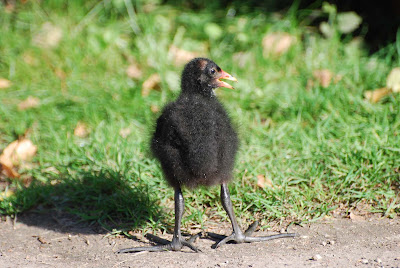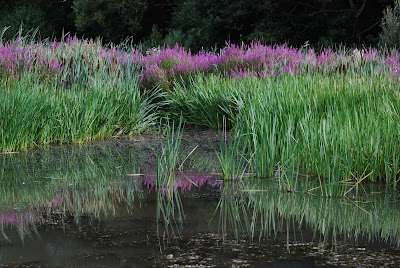This post concentrates on the birds and bugs that I found on my walks around Rodden Reserve. An obliging Tortoiseshell sits on one of our signs.
 I think I shall feint if I ever get close enough to get a decent photo of these resident Grey Herons before they get spooked! First one and then the second took off to settle on a quieter part of the reserve.
I think I shall feint if I ever get close enough to get a decent photo of these resident Grey Herons before they get spooked! First one and then the second took off to settle on a quieter part of the reserve. I think there must've been some aphids on this rose as there were three Blue Tits feeding together. I only managed to snap one of them though.
I think there must've been some aphids on this rose as there were three Blue Tits feeding together. I only managed to snap one of them though.
 Long-tailed Tits tend to fly around in quite large parties at this time of year and I had a flock fly through quite close while I was standing in one of my favourite spots on the reserve.
Long-tailed Tits tend to fly around in quite large parties at this time of year and I had a flock fly through quite close while I was standing in one of my favourite spots on the reserve.  In the same area, I also had about 8-10 warblers pass through too. From the calls, I think most of them were Chiffchaffs. As I was standing there, all of a sudden there were lots of alarm calls and a Sparrowhawk swooped into a nearby tree. It gave me a fierce glare for a second before dashing off again. I didn't have time to get my camera up unfortunately. As a consequence, all the small birds that had been busy around me had shut up and completely gone to ground.
In the same area, I also had about 8-10 warblers pass through too. From the calls, I think most of them were Chiffchaffs. As I was standing there, all of a sudden there were lots of alarm calls and a Sparrowhawk swooped into a nearby tree. It gave me a fierce glare for a second before dashing off again. I didn't have time to get my camera up unfortunately. As a consequence, all the small birds that had been busy around me had shut up and completely gone to ground.  I often see Common Buzzards at the reserve. I'm sure they must nest somewhere close by. I love their wild cry.
I often see Common Buzzards at the reserve. I'm sure they must nest somewhere close by. I love their wild cry. On to the bugs. This is a Long-winged Conehead with it's amazingly long antennae. It's also a female with that long ovipositor.
On to the bugs. This is a Long-winged Conehead with it's amazingly long antennae. It's also a female with that long ovipositor. I was pleased to find this Southern Hawker still patrolling his chosen area of pond.
I was pleased to find this Southern Hawker still patrolling his chosen area of pond.  A common Garden Spider (Areneus diadematus) just wrapping up something tasty for breakfast! They are easily recognised by the white cross on their back. Another name for it is Cross Spider.
A common Garden Spider (Areneus diadematus) just wrapping up something tasty for breakfast! They are easily recognised by the white cross on their back. Another name for it is Cross Spider. I don't know which spider this is, but it had an impressive web which showed up well due to the dew!
I don't know which spider this is, but it had an impressive web which showed up well due to the dew! There was still the odd plant flowering on the reserve and this Small Copper was taking advantage of that fact. They are one of my favourite butterflies. Always looking so neat and vibrant.
There was still the odd plant flowering on the reserve and this Small Copper was taking advantage of that fact. They are one of my favourite butterflies. Always looking so neat and vibrant.













































